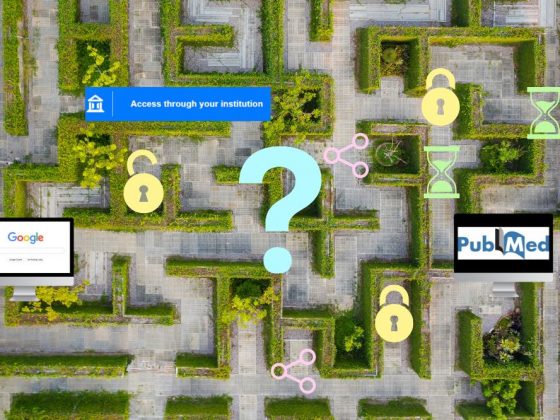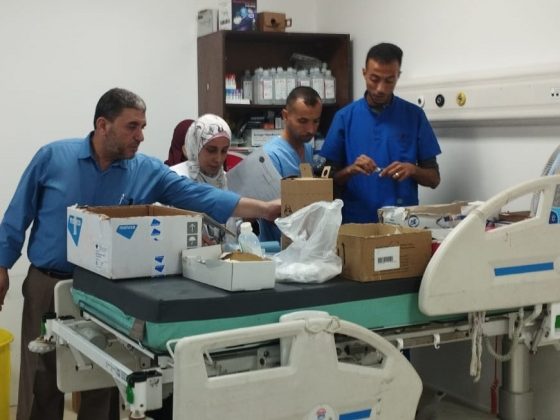When it comes to precision and personalised medicine (PPM), clinical practice in oncology takes pride in developing and administering treatments that selectively target components of tumour cells. But, PPM is a model that also takes into account the inherent variability of patients’ genetic, environmental and lifestyle factors, to identify which treatments would be most effective for which patient population. PPM does not consist merely of the selective targeting of tumour cells’ components, but also that of patient populations.
One of the available tools of PPM that can facilitate this tumour-and-patient-selective targeting is ‘companion diagnostics’ ‒ these are molecular assays that measure the levels of genes, mutations, and proteins. However, when it comes to delivering new treatments to its suited patient populations, too few treatments coming on to the market leverage tools as companion diagnostics to allow for a “lock and key model”. This accounts, in large part, for the failure of clinical practice in oncology to live up to their early promises surrounding PPM.
Take chemotherapy, which remains the standard of care for many cancers. Traditionally seen as the antithesis of precision medicine, as it targets all rapidly dividing cells, its contribution to overall survival in the United States was calculated in a 2004 paper (Clin Oncol 2004, 16:549‒60) to be only 2.1%, due to limited specificity. Gene expression tests are now available that can avoid giving unnecessary chemotherapy to the majority of women with the most common form of breast cancer (i.e., hormone receptor-positive, HER 2-negative, and axillary lymph node-negative). While access to the tests remains patchy, and efforts to develop similar tests for other cancers are proving a challenge, the breast cancer gene expression tests offer an example of how PPM, when delivered to its suited patient population, can embody the Hippocratic Oath that all doctors must take before they practice medicine: “first, do no harm”.
The hope was that genome-driven therapies that target specific mutations would be much more effective because of their greater specificity in targeting tumour cells. But recent studies, such as the one by Marquart et al (JAMA Oncol 2018, 4:1093‒98), indicate that as few as 5% of cancer patients in the US stand to benefit from these types of therapy.
So far, the story is not so different with immunotherapy. The treatment still lacks the tools to identify which patients will benefit, and which ones will suffer the adverse effects. PD-L1 expression in the tumour microenvironment is currently the standard and most widely-used biomarker to predict response, but it suffers several limitations.
Firstly, sampling a certain tumour site or at a certain time point might not reflect the state of the PD-1 or PD-L1 axis, because PD-L1 expression can be transient, with intrapatient and intratumour heterogeneity. Secondly, there is a poor uniformity in the immunohistochemistry antibodies used to test for PD-L1 as well as in the thresholds used to indicate PD-L1 positivity. Thirdly, PD-L1 immunohistochemistry does not take into account the influence of non-active immune cells at the level of tumour microenvironment, or concurrent suppressive immune pathways on anti-PD-1 or anti-PD-L1 therapy response.
Gay and Prasad’s findings that only around 8% of all US cancer patients would benefit from immunotherapy should therefore come as little surprise (STAT News, March 8 2017).
Looking across all classes of cancer drugs, one 2001 study concluded that any class of cancer drugs is only effective in roughly 25% of patients (Trends Mol Med 2001, 7:201‒4). Although the following two decades have yielded a stream of targeted PPM oncology treatments, the translation of PPM into a patient population-targeted hit rate fell short of the tremendous technological advances seen in molecular biology. As a result, the vast majority of cancer patients still end up receiving ineffective and expensive treatments while suffering unnecessary adverse effects.
The vast majority of cancer patients still end up receiving ineffective and expensive treatments while suffering unnecessary adverse effects
The scientific challenge
Developing PPM treatments for a disease as heterogeneous as cancer is certainly daunting, as there are more than 100 types, some of which have molecular subtypes.
One of the conduits to overcome this challenge is identifying biomarkers ‒ these are objectively measured and evaluated indicators of normal biologic processes, pathogenic processes, and pharmacologic responses to a therapeutic intervention. Overall, they include pharmacogenomic, pharmacological, metabolomic, proteomic, toxicological and imaging indicators.
Early, predictive, non-invasive biomarkers enable drug developers to examine in some detail the efficacy and safety of an experimental drug in different settings, and make it possible for researchers and clinicians to select patients who would benefit the most.
But, finding effective biomarkers has been a challenge, not least because the expression of biomarkers can vary in the same tumour according to its location or stage, and also over time.
Boosting efforts to research and develop tools to assess the efficacy and safety of experimental drugs, including outlining the desired characteristics of biomarkers, is a central focus of the Innovative Medicines Initiative (IMI) ‒ the world’s largest public‒private partnership, which was launched by the EU ten years ago, in an effort to accelerate the development of new therapies in areas of unmet need.
With more than €5 bn in funding over the period 2008‒2024, the IMI has made important progress, not least in facilitating collaborations between different competing global companies, small and medium-sized enterprises, and academia, while improving access to research infrastructure. Yet, such substantial efforts failed to act as the potent catalyst in translating PPM’s mission of developing new specific drugs and delivering their benefit to suitable and wider groups of patients in Europe.
Does the frustrating pace of PPM progress so far by clinical practice in oncology indicate that we need to improve how we go about it, or that the early promises of PPM are unlikely ever to work well in a disease as complex as cancer?
Do we need to improve how we go about it, or are the early promises of PPM are unlikely ever to work well in a disease as complex as cancer?
Rethinking biomarkers
One developing line of thought that supports the more optimistic view, suggests that efforts so far have been held back by an erroneous assumption that predicting which patients will benefit or suffer harm when exposed to a given medical intervention, can be done by a single biomarker.
The suggestion is that ‘combinatorial biomarkers’ can be superior. For example, in addition to PD-L1 expression, there are other promising candidates for predictive biomarkers in immunotherapy. These include: tumour mutation burden (TMB), imaging biomarkers, peripheral blood T cells, T-cell receptor clonality, tumour-infiltrating lymphocytes (which might be an indicator of prognosis as well as predictive of response to immunotherapy), immune gene signatures, T-cell-inflamed gene expression profile (GEP), and description of the microbiome. A 2018 study by Cristescu et al (Science 2018, 362 (6411):eaar3593) showed that tumour mutation burden and a gene expression profile signature provided a predictive value for clinical response in patients treated on four KEYNOTE trials ‒ KEYNOTE-012, -028 (JCO 2019, 37:318‒27), -001, and -006 (Cancer Res 2019, 79(13 Suppl):Abstr #4217).
Another area where a ‘biomarker consortium’ may become important is in the early detection of certain cancers, through the detection and analysis of volatile organic compounds (VOCs) in exhaled breath. Several trials are underway to identify and profile such VOCs.
Integrating new tools
Another emerging line of thought is that we need to incorporate new tools for PPM, other than biomarkers. One example is mass regulator proteins (MRs) – these are a few conductor proteins that orchestrate the largest networks of other proteins, dictate stability of cancer states, and drive cancer growth.
New research is demonstrating that, despite the heterogeneous cancer-triggering genetic and epigenetic alterations, the programme of gene expression ‒ with its related protein activity that sustains a tumour for a given cancer type ‒ is almost identical from one patient to another, and represents a real-time window into cancer activity. This makes it a very precise and valuable therapeutic target against cancer.
For example, in brain cancer (glioblastoma), three mass regulator proteins were shown to start and maintain cancer growth (Nature Commun 2018, 9:4020). This opens up important targets for PPM in treating the most aggressive form of brain cancer.
The discovery of mass regulator proteins adds a new tool for PPM, by shaking the tree for proteins – not mutations ‒ to take centre stage for therapeutic targeting in oncology. It is also exposing the limitations of the long-standing belief that cancer is mainly driven by genetic mutations.
The discovery of mass regulator proteins exposes the limitations of the belief that cancer is mainly driven by genetic mutations
Shifting focus to early detection and precision prevention
Even if we become much better at developing and practising PPM in oncology, there is, currently, little evidence to indicate that it will offer the level of cure, long-term disease control, or enhanced quality of life that is desired in advanced cancers – at least in the case of solid tumours.
This means we need to focus more on strategies for primary prevention to prevent the disease before it happens, and secondary prevention aimed at early detection and, by this, minimising cancer spread and recurrence among patients. This sets the intent to cure cancer rather than just prolonging survival for weeks, months, or years.
Precision secondary prevention can constitute a valuable area in PPM. The use of the selective oestrogen receptor modulators tamoxifen and raloxifene has significantly prevented oestrogen-receptor-positive breast cancers; the use of the epidermal growth factor receptor inhibitor erlotinib has prevented some head and neck cancers, and the development of vaccines that can prime the immune system to prevent cancer by targeting tumour-associated antigens, such as vaccines against hepatitis B virus, human papillomavirus, and mucin 1, has prevented hepatocellular cancer, cervical cancer, and some colorectal cancers, respectively.
One study estimated the US national annual treatment cost-savings from early cancer diagnosis of breast, lung, prostate, and colorectal cancers, and melanoma, to be in 11 digits (i.e., tens of thousands of millions of dollars) for the year 2017 (Data 2017, 2:30). Another UK-based study estimated that the cost of treating colon, rectal, ovarian and lung cancers at stage I is around 27%, 37%, 35% and 61% of the cost of treating the respective cancers at stage IV (cancerresearchuk.org/sites/default/files/saving_lives_averting_costs.pdf).
Cost-savings in the US from early cancer diagnosis of breast, lung, prostate, and colorectal cancers, and melanoma, could be in 11 digits
Getting PPM right: the three elements
Gathering data
Making PPM work well for large numbers of cancer patients involves first of all acquiring PPM data using various ’omics techniques (transcriptomics, genomics, proteomics, metabolomics, etc). This enables investigators to build up a picture of the biology of the disease ‒ how it behaves in different hosts, and in response to different interventions. Getting this right is essential for developing experimental drugs, and guiding the trial design.
Developing interventions
Then, there’s the question of developing the treatments themselves, which could take the form of monoclonal antibodies (to treat cancer), vaccines (to prevent, and in some cases treat, cancer), organoids (to model cancer biology, and examine cancer drugs sensitivity and toxicity), and CAR T-cells (to treat cancer). This should be happening hand in hand with drafting regulations to facilitate an evidence-based assessment of the efficacy and safety of such novel drugs by the regulatory authorities. Regulators should be much stricter in requiring drug developers to integrate predictive and prognostic biomarkers into their workflow.
A 2019 analysis of oncology drug approvals awarded by the European Medicines Agency between 2014 and 2016, showed that around three in four of the randomised controlled trials that led to new drug approvals, measured indirect (surrogate) measures of clinical benefit, which do not necessarily predict survival or quality of life, while overall survival was a primary endpoint in only around one in four clinical trials (BMJ 2019, 366:l5221). If the exploratory work with biomarkers and companion diagnostics had been done more thoroughly, many of these trials could arguably have focused much more effectively on the suited patient populations, with clinically meaningful benefits in terms of survival and quality of life as the endpoint.
If the exploratory work had been done more thoroughly, many of these trials could have focused much more effectively on the suited patient populations.
Addressing socioeconomic implications
Making that happen requires the third element, which involves addressing the socioeconomic implications of PPM. This could include, for instance, making pharmaceutical companies take on much more of the economic risk, when a drug they trialled in an imprecise test patient population eventually does not benefit many of the real-world patient populations. It also requires addressing ethical considerations to ensure, for instance, that PPM data can be shared effectively while protecting patient privacy.
In short, there is great hope regarding what PPM can achieve in oncology. Realising that hope will require many changes in how we go about developing and using PPM treatments. Key among them will be:
- optimising the design of clinical trials with the incorporation of PPM tools (i.e., biomarkers, etc),
- exerting quality control over the regulations of new drug approvals,
- developing combinatorial biomarkers that address the complex interactions between the host, tumour, and tumour microenvironment,
- developing new PPM tools (from optimisation of assays to clinical validations, to assessments of clinical utility), and
- shifting the focus of research and development to early detection and prevention, remain areas of improvement; to fulfil the promise of PPM and benefit far more patients.












